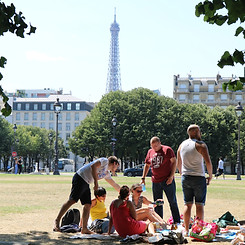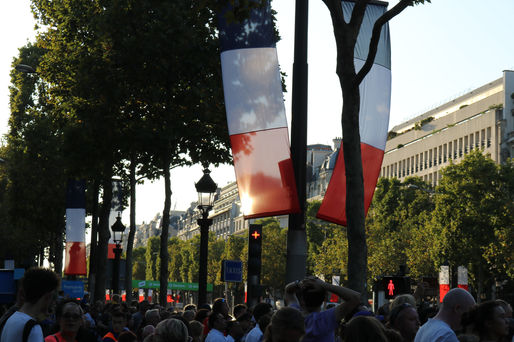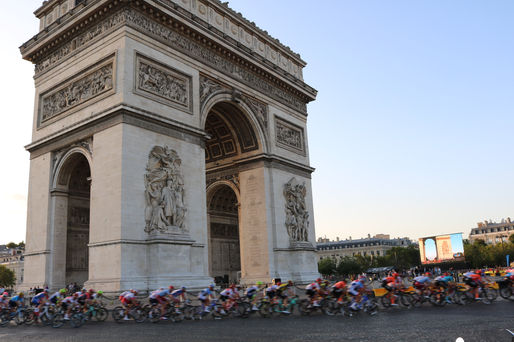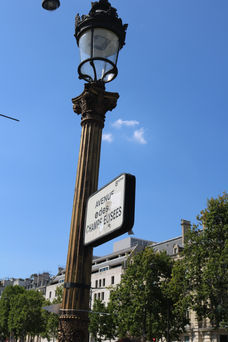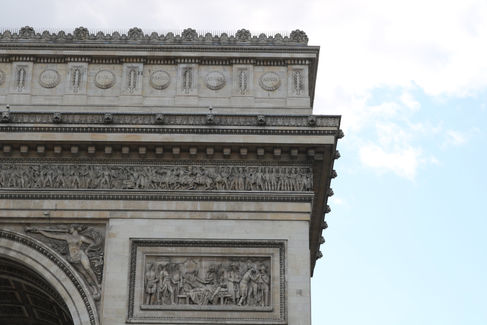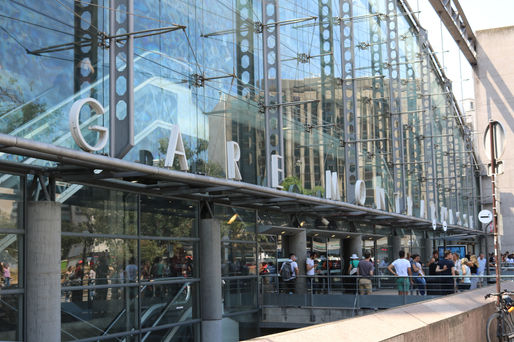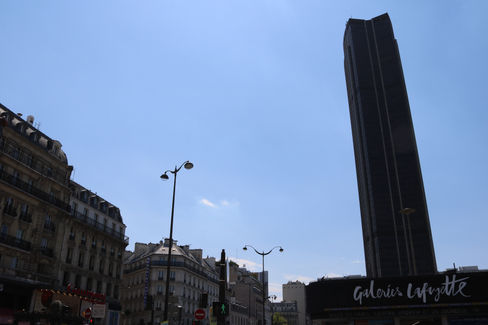PLACES
CHAMPS-ELYSEE - CLEMENCEAU
The Champs-Elysee- Clemenceau stop will take you to some of the most visited locations in Paris. Right when you leave the metro station, you are facing the Champs-Elysee strip. Shops run parallel to each other remind you of Saks Fifth Avenue in New York City. You’ll find yourself surrounded by expensive and well-known brands, including Dior and Louis Vuitton. If you continue walking down the strip, you’ll eventually come across the Arc de Triomphe, which is another massive tourist destination. The Arc de Triomphe was ordered to be built by Napoleon Bonaparte in the seventeenth century in order to commemorate the French Armies. It wasn’t completed until long after Napoleon’s death. Since then, it continues to serve as a focal point of Paris and a reminder to honor those who have fought. There is a flame that is lit for all those we must remember and respect. Details on the pillars show us wars that were fought (and won) as well as the name of soldiers. Seeing the Arc de Triomphe and walking down the Champs-Elysee seemed so surreal, straight out of a movie set. We were also fortunate enough to experience the last leg of the Tour de France. It was an amazing thing to witness as we saw the colorful group of cyclists zoom by.

INVALIDES
Opened in 1913, Invalides was named after a hospital/retirement home for soldiers King Louis XIV had built in 1860. And today, it is known as the Musée de l'Armée. The museum today features military history surrounding the French Revolution, World War I and World War II. The museum also features the tomb of Napoleon Bonaparte. The elaborate and impressive grave displays his life achievements, which include the concept of checks and balances, public education, and meritocracy.
Down the block from the museum, we stumbled upon the Petit Palace and the Grand Palace. We were able to enter the Petit Palace, free of admission! It was a great opportunity to see more items displayed owned by the French monarchy and get escape the intense heat outside. The museum was grand and what was housed inside was just as magnificent.

MONTPARNASSE-BIENVENÜE
A bit disoriented getting off at Montparnasse Bienvenüe since the metro station is also a train station, which is known as the Gare de Montparnasse. It contains connection to the 4, 6, and 12 trains. It is also considered the 4th busiest station on the metro. In 1906, it opened for the first time and has been transporting riders ever since.
The surrounding area was hectic with travelers and tourists. Near the station, we came across a mall, Galeries Lafayette, which had retail shops, restaurants, and small souvenir shops. This same mall operates throughout Paris in different locations. Outside the shopping center, you will be greeted with a massive eyesore known as the Tour Maine Montparnasse Tower or the USB building. It mostly houses offices and organizations. It was considered the tallest building in all of France until 2011 when it was surpassed by the Tour First building. The majority of Parisans were upset about the construction of this building since it takes away from the French aesthetic. I, too, am upset that it was built because it does not compliment the surrounding area and destroys the view of France.

Landmarks as far as the eye can see! The museums, national monuments, and crowded metro stops and streets gave for a real tourist day. Visiting the Champs-Elysée made me feel like I had all the money in the world and I was ready to drop however much it was to make me happy. The Arc De Triomphe was a site just in itself. I thoroughly enjoyed learning the meaning behind this massive arc and understanding the significance it carries throughout French history. The Invalides stop took us back in time directly to the French Revolution. Studying Napoleon’s past and visiting his tremendous tomb really makes you wonder what your opinion of him is. He executed massacres, those even including innocent women and children. He was a ruthless warrior and never hesitated when it came to war. But he created so much progress and change for France, you can’t help but appreciate what he’s done (the good, not so much the deaths). If it wasn’t for Napoleon and his efforts, not only the country of France but the entire world would look drastically different than it does today. So do we call him a hero? A villain? Or that grey label in between?



